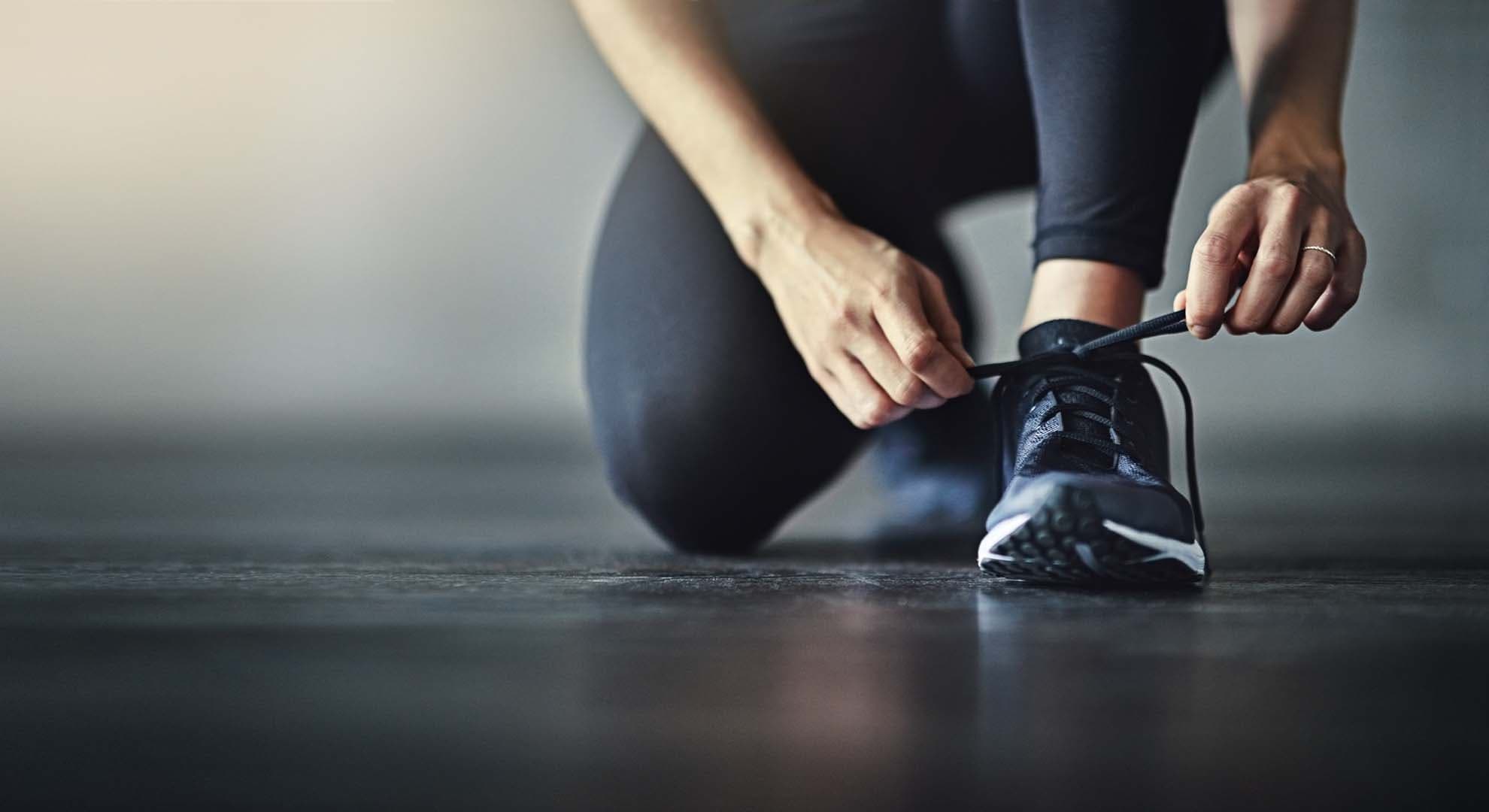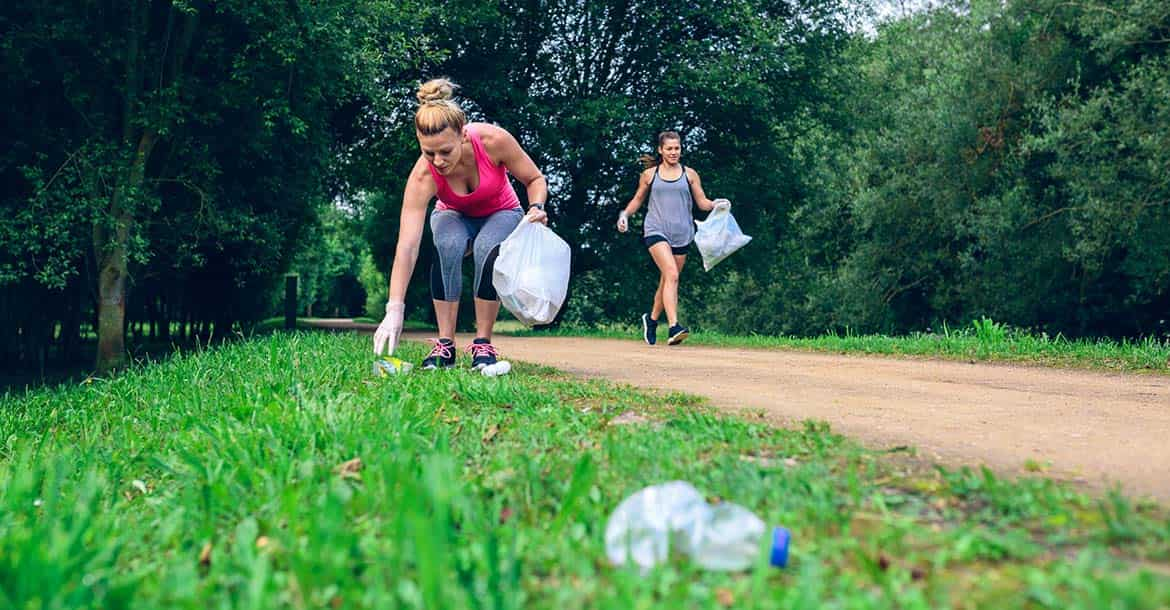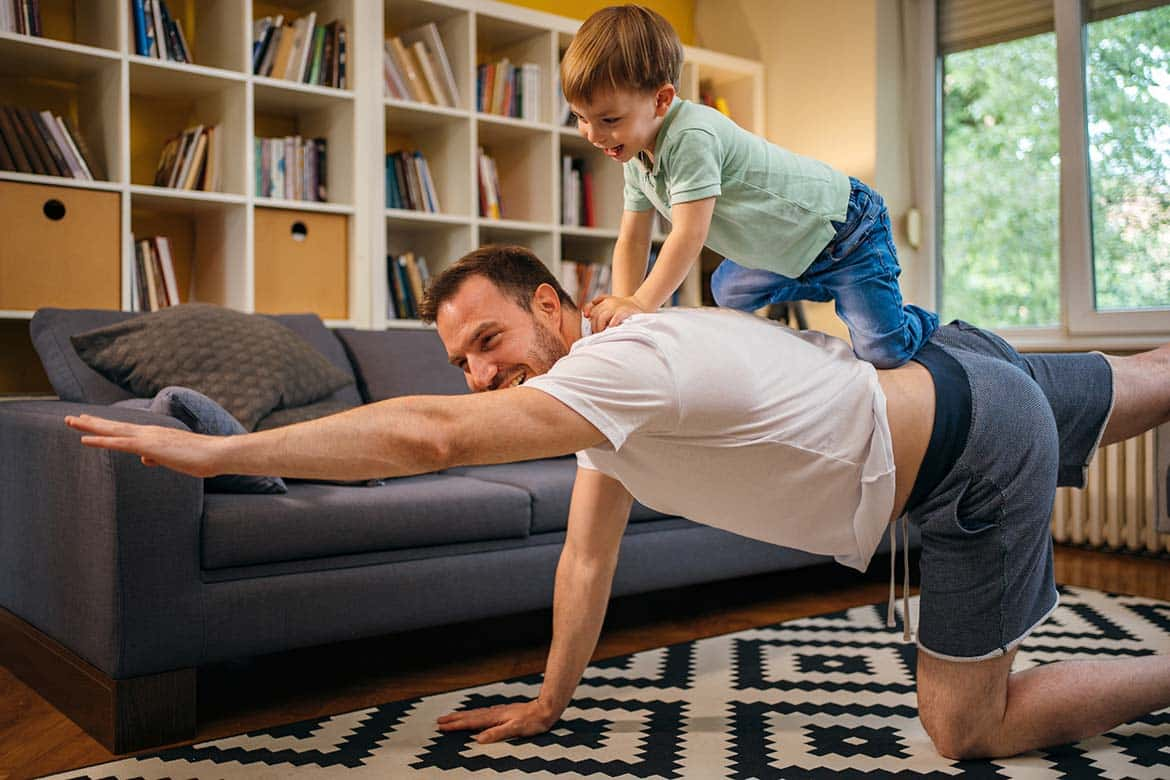
Is our desire to get fit contributing to climate change?
From non-recyclable plastic equipment in energy-intensive gyms to fast fashion activewear and food-wasting diets, it turns out that many elements of our fitness regimes could be contributing to climate change.
As you scour the internet looking for the appropriate ‘6-pack in 6 days’/Keto/juicing/shake-weight fad to help work off the pounds, you’ll likely have discovered that it’s not so easy to be sustainably sporty.
It seems that the major impact of how we exercise has slipped under our collective eco-radar, and what is good for our gains is not necessarily good for our planet. This doesn’t mean that you should abandon your fitness journey, declare that “the gym was too busy anyway” and order a pizza.
Instead, let’s explore a few simple sustainable alternatives to help you get active and ensure that when you work up a sweat it’s you and not the planet that is feeling hotter…and yes, we will be shoehorning in as many fitness clichés as we can.
The only bad workout is no workout
Whether you love it or hate it, going to the gym can be an ordeal. Just finding the time in our busy schedules to workout can feel like quite an achievement, never mind actually putting in the work once you get there.
So, we can be forgiven for not thinking about the environmental impact while we pound away on the treadmill. However, when you do stop, think, and look around you can’t help but reflect on the damage being done.
Vending machines full of plastic bottles or fuel rations in space-grade foil, rows of energy-draining machines lit up like the Blackpool illuminations and air-conditioning so cold a polar bear would feel at home.
What can we do to make a difference? Unless you are a gym owner it could be tricky, but let us suggest some alternatives to opening windows, sticking to free weights, and unplugging machines for your personal fitness journey.
No pain, no gain
Could the power generated from our workouts power our gyms? This solution is quite a common one and something many ‘green gyms’ are trying and succeeding at, using self-powering machines like the air bike and water-rower.
Nevertheless, doing some quick maths does demonstrate why we shouldn’t be putting all our protein-rich eggs in this basket.
Studies show that the average UK gym-goer exercises for on average 35 minutes 4.8 times per week, if we took all the energy generated by these workouts over a given month, we would only be able to power the whole of Scotland for approximately 12 minutes, or if we wanted to make the most of it, the Orkney Islands for 2.3 days.
While these machines are great for individuals this level of production isn’t exactly going to solve all our problems, so what other options do we have?
Thinking outside the box
Dig out those running shoes or walking boots and become one with nature.
Not only does training outdoors help reduce your carbon footprint (with less reliance on energy-sapping equipment) but just 5-10 minutes of green exercise has shown to have a positive impact on self-esteem, improving your mood and reducing depression and anxiety. A win-win, right?
Those who are uber keen and want extra environmental brownie points can even try their hand at ‘plogging’. This is the new trend of litter picking while you jog, which is surely the most efficient healthy you, healthy planet combo out there.

If plogging isn’t for you then be on the lookout for the outdoor gyms that are cropping up in parks all around Scotland. These bodyweight machines are ideal for working up a sweat and letting you enjoy our lovely public spaces.
One quick scan of a weather app is enough to remind us that we live in Scotland, a country with such ‘dreich’ weather that we have more words for rain than Inuit’s have for snow. While we might not melt like the Wicked Witch of the West, exercising in the rain isn’t likely to get everyone excited for their next warm-up so a home workout could be the next best thing.
Hustle for that muscle
Fortunately, we aren’t suggesting you build a fully stocked gym behind your potted plants, instead with some imagination and ingenuity, you can turn the smallest of spaces into the epitome of self-sufficiency.
For those exercise aficionados, who require the best of the best, there are fold-away multi-station options that allow you to train the full body with a single piece of self-powered kit. Be sure to explore second-hand sites such as Gumtree or Facebook Marketplace and refurbished gym equipment sites before buying brand new where possible.
For those who prefer a cheaper DIY route, reusing handy household items such as garden hoses as inexpensive battle ropes, old leggings as resistance bands, a filled backpack as a makeshift weighted vest or a football doubling as a medicine ball is a great way to get you started. Here’s a handy video to give you inspiration for your next home workout.
Want to keep it simple? Then bodyweight exercises are perfect for those who don’t have access to equipment. These exercises (such as press-ups, squats, and lunges) are exactly what they sound like, using only the weight of your own body to work out with. You can even jazz it up by getting the whole family involved and using your partner or kids for added weight – remember it’s supposed to be fun!

If you don’t know where to start, there are plenty of apps and YouTube videos with workouts to suit everyone’s style and ability, no personal trainer needed. As one Zero Waste Scotland team member commented, “during lockdown my partner dusted off an old Davina workout DVD from 2009, and while the fashion might be questionable the workouts are just as practical today.”
Just do it
Traditional exercise clothing was designed specifically to withstand demanding workouts and so have greater durability. Sadly, the recent trend in fast fashion activewear has led to the market becoming saturated with non-recyclable, non-sustainable garments made from synthetic fibres, like polyester or spandex.
The energy-intensive production, poor quality and short shelf life generally results in these clothes finding their way into landfill after only a handful of uses.
Thankfully, there are brands that are embracing their green makeover and offering items such as bamboo leggings, plastic-free jute yoga mats and BPA-free steel water bottles. Big brands such as Adidas have their popular Parley range which is created from upcycled marine plastic waste sourced from remote island and coastal communities.
Smaller UK brands, including Starseeds are innovating slow fashion ranges using organic cotton, linen, hemp, recycled polyester and even coffee grounds which apparently help with odour control.
Alternatively, if you are looking to revitalise your gym wardrobe on a budget then use sites such as Depop or Vinted to sell your own preloved items and use the money to buy your new second-hand sportswear.
You are what you eat
So now that we know what to wear and how to train, we need to ask ourselves how do we find the energy to do it all? For most, the hardest part of any fitness plan is trying to resist the siren call of the local takeaway.
Not only is meal prepping a fantastic way to maximise your performance and give you control but it is also a great way to tackle climate change. It was reported that 81% of us are concerned about climate change but only 37% of us understand that food waste is a major contributor with food waste accounting for more greenhouse gas emissions than all the commercial flights we take each year!
By planning your meals in advance, sticking to shopping lists and batch cooking, it will be easier to follow your plan and prevent food from being needlessly thrown away, ending up in landfill and ultimately contributing to climate change.
Check out Love Food Hate Waste – Scotland for kitchen tips and tricks, shopping skills and storage solutions to help you get the most out of your nutrition and reach your #FitnessGoals.
It never gets easier — you just get stronger
There we have it, everything you need to go from couch potato to 5K crusher all while transitioning to a more zero-waste lifestyle. Hopefully, this will encourage you to take a closer look at your health and hobbies and see the amazing opportunities that are out there.
Making small incremental changes to the way we live will make a huge difference, not only to our own well-being but that of the environment as well. So, we invite you to join us in dragging yourself off the couch, lacing up those trainers and start making changes, after all, “Yesterday you said you’d start tomorrow!”.
Share your waste less fitness journey with us by tagging @HowToWasteLess on social media.
